Posted: June 2nd, 2011 | No Comments »
I’m often moaning about the high price of academic books – great titles that set you back 50 or a 100 quid are a pain, especially for those of us not anywhere close to an academic library that we can slip into. Maybe Kindle is the answer? It might be for some of my books. My Through the Looking Glass: China’s Foreign Journalists from Opium War to Mao is now on Amazon in Kindle edition for under 7 quid!! How good is that…and you get all the photos. So hopefully a bunch of students or more casual readers may decide to buy the book at this price. Additionally, if you’re in China or somewhere where the book is hard to find (though you can always rely on the excellent Bookworms in Beijing, Suzhou and Chengdu to stock it I might add) then now it’s a click away at Kindle. Excellent.
I might also add that my Carl Crow biography, A Tough Old China Hand is also available in a reduced price Kindle edition too – double excellent!! And well done Hong Kong University Press.

Posted: June 1st, 2011 | No Comments »
A new book on China that sounds interesting – American Radio in China from Michael Krysko at Kansas State University. As usual the publishers blurb and cover below. I had a tiny, tiny hand in this work through being a fan of the great South Dakotan broadcaster and journalist Carrol Alcott who was a legend on Shanghai radio opposing the Japanese (see my book Through the Looking Glass) and Irene Kuhn who was the first foreign female broadcaster in China. I’m glad to say they both get a mention and a rather cool picture of Mr Alcott is also included. Judging from the contents and images list the book covers a lot of the great days of radio in Shanghai and China between the wars. The publishers web site has more details and an excerpt here.

Between 1919 and 1941, an array of American businessmen, diplomats, missionaries, and private citizens hoped to bring American radio to China. Initiatives included efforts to establish Sino-American radio-telegraphy links across the Pacific, start shortwave broadcasts of American programming to China, support America broadcasting in China itself, increase sales of American radio equipment, and carve out a niche on China’s airwaves for American missionary broadcasters. However, excessive faith in radio’s influential powers to promote presumably mutually beneficial American economic and cultural expansion blinded many Americans to the complexities they faced. American radio ultimately magnified rather than mitigated the tensions that pit Americans against Chinese nationalists and Japanese imperialists in the years before the Pacific War. By drawing on scholarship in the history of technology, communications and media studies, and US foreign relations, this book’s exploration into the relationship between technology, communications, and international relations is relevant to understanding today’s globalizing world.
Posted: May 31st, 2011 | 2 Comments »
 Yuezhou Road (formerly Yoochow Road) along the two blocks between Baoding Road and Zhoushan Road (Paoting and Chusan Roads) is one of those great northern border roads that was close to the northern edge of the International Settlement, just north of the former Jewish ghetto and almost on the border between Hongkou (Hongkew) and Yangpu (Yangtszepoo) districts. It is now almost done for – the northern side of the street was entirely cleared in the 1990s to be replaced with a series of jerry built tower blocks that will last another decade if they’re lucky and the winters aren’t too harsh.Everything on the southern side blocks that isn’t already gone is now chai-ed and will be going in the next few weeks or months.
Yuezhou Road (formerly Yoochow Road) along the two blocks between Baoding Road and Zhoushan Road (Paoting and Chusan Roads) is one of those great northern border roads that was close to the northern edge of the International Settlement, just north of the former Jewish ghetto and almost on the border between Hongkou (Hongkew) and Yangpu (Yangtszepoo) districts. It is now almost done for – the northern side of the street was entirely cleared in the 1990s to be replaced with a series of jerry built tower blocks that will last another decade if they’re lucky and the winters aren’t too harsh.Everything on the southern side blocks that isn’t already gone is now chai-ed and will be going in the next few weeks or months.
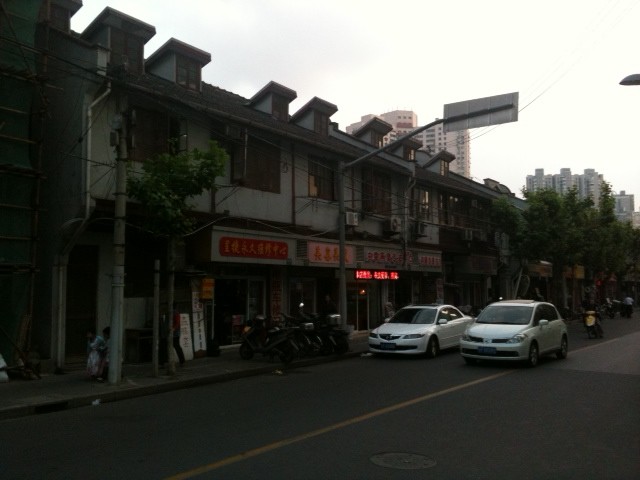 Some of the few remaining older low level buildings along Yoochow Road
Some of the few remaining older low level buildings along Yoochow Road
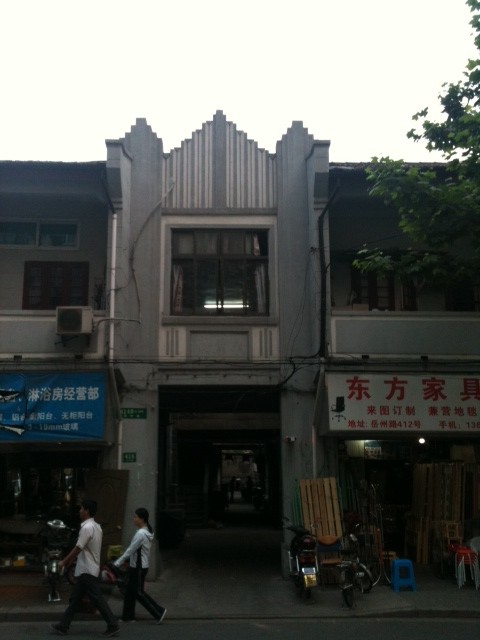 with a few nice modernist entrance arches
with a few nice modernist entrance arches
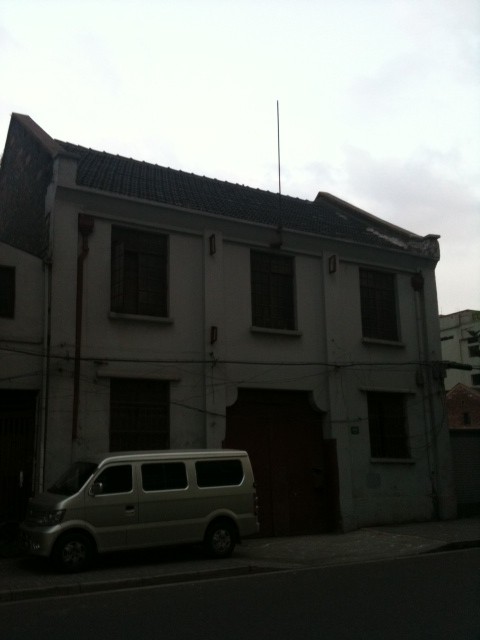 There are also a few nice commercial structures (this one a merchant’s warehouse I believe) also remain…
There are also a few nice commercial structures (this one a merchant’s warehouse I believe) also remain…
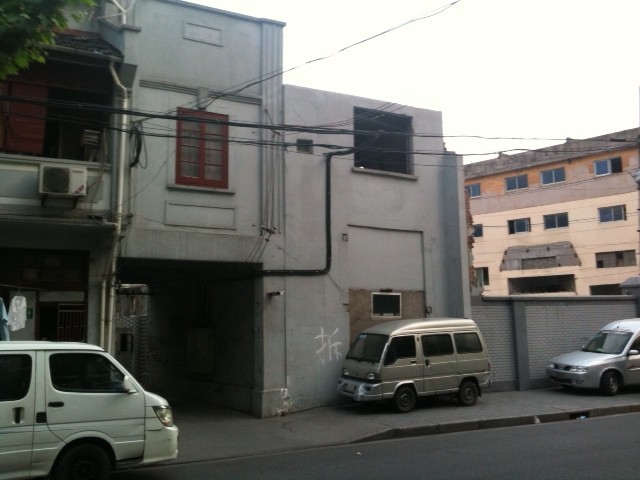 But, as you can see, the western end of this building has been adorned with the dreaded chai sign indicating imminent demolition
But, as you can see, the western end of this building has been adorned with the dreaded chai sign indicating imminent demolition
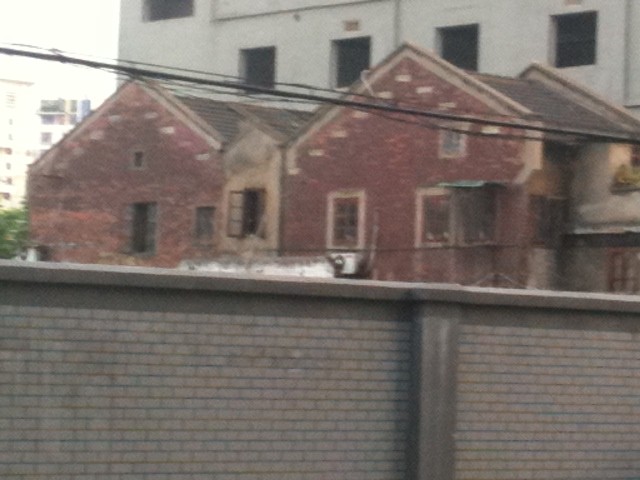
some clearance has already revealed some interesting architectural details – though these structure (in quite good condition) are already truncated by a somewhat less attractive structure that is being thrown up behind
Posted: May 30th, 2011 | No Comments »
A book – The Urban Design of Concession – that looks worth a read – a review, from the Asian Review of Books, suggests the book is a little academic but others who have read it tell me this is a bit strong and it’s an eminently readable book. As usual the publishers (rather boring in this case) blurb below and a link to the ARB review here.

Established as beachheads of foreign influence along coastal China during the mid-nineteenth century, the twelve Treaty Ports – Shanghai, Dalian (Dalyn), Fuzhou (Foochow), Guangzhou (Canton), Hankou (Hankow), Harbin, Nanjing (Nanking), Ningbo (Ningpo), Shantou (Swatow), Tianjin, Tsingtao, and Xiamen (Amoy) – can be considered from a number of perspectives – initially as differentiated societies with dual administrative structures; as socio-cultural phenomena; as new political power structures; as robust centres of international trade and commercial growth; and as new regimes of city building and institutional development. These ‘gateways’ both into and out of China, transformed not only attitudes to modernization, but almost inadvertently fuelled changing political attitudes.
This book examines the evolving contextual changes in the Treaty Ports over the past 150 years. It illustrates, through writing and line sketches, the imprints on the modernizing cities of older places and spaces from these early times, which have left a residue of physical traces in terms of plan forms, streets and building groups.
Posted: May 29th, 2011 | No Comments »
I’m currently reading Jeremy Lewis’s biography of the fonder of Penguin, Allen Lane – Penguin Special. Interesting to note that almost from the start of the great list of Penguin Specials in the late 1930s were a couple of books on China. So let’s name them:
Edgar Mowrer’s Mowrer in China was published in 1938. Mowrer was a well known globe trotting American journalist in the 1930s and had started out covering the First World War and then got to know both Rome and Berlin in the 1920s/1930s. More about Mowrer here. Below Mowrer’s classic Penguin cover and an excerpt from the book:

“… the repeated bombings were almost as successfully murderous as those witnessed at Canton. From the garden of the Baptist Centre in Kaifeng I watched a particularly brutal attack. A little nervous for the ‘planes passed almost over us, yet determined to see and photograph, we stood out and watched six Japanese aircraft in two formations of three, fly first over the city from east to west and then return, at each passage dropping a number of hundred pound bombs of the kind considered less harmful. At one instant I saw six falling from a single ‘plane, one under the other like a string of beads.
They missed us by nearly a quarter of a mile. While the murderers roared away into the east, we hurried to the stricken area near the East Gate. The bombs had fallen into the poorest quarter where the coolies were nearly all absent or at work. The number of women and children killed and maimed was nearly a hundred. I counted several bodiless heads of babies. From piles of rubble came faint groans. A woman sat speechless beside the prostrate figure of her dead husband, in her arms a baby missing from the waist down. The Japanese airplanes that did the killing were manufactured in the United States.â€
A book I know less about is JMD Pringle’s China Struggles for Unity published in 1939. Here’s the publishers blurb:
 Unlike Japan, which awoke quickly to the new industrialism of the West, China was content to glide peacefully along, ignoring the rest of the world, pursuing the wisdom of her philosophers and artists. But by the turn of the century (1900) as the devastating effect of foreign imperialism began to make itself felt, a new national spirit awoke…….
Unlike Japan, which awoke quickly to the new industrialism of the West, China was content to glide peacefully along, ignoring the rest of the world, pursuing the wisdom of her philosophers and artists. But by the turn of the century (1900) as the devastating effect of foreign imperialism began to make itself felt, a new national spirit awoke…….
Posted: May 28th, 2011 | 4 Comments »
Below is a picture snapped illicitly in the Shanghai Railway Museum. It is of the Markham Road Junction. That is what it is – you can read the sign on the junction box. Markham Road was in Shanghai’s International Settlement and is now Huai’an Road. Markham Road is on most maps of Shanghai pre-1949 and is a small road running from Suzhou Creek (Soochow Creek). It is usually described as a ‘cut-through’ or ‘short-cut’ to Gordon Road.I have seen records of some wealthy Chinese living on the street and several Chinese Christian missionary workers too.
There was a bridge across Soochow Creek at the end of the street called the Markham Road Bridge, which took you out of the Settlement into the Chinese-controlled districts of Zhabei (Chapei) and Baoshan (Paoshan) across the Creek. Trams ran along the street, indeed they crossed Soochow Creek at the Markham Road Bridge. In 1932 American Marines were drafted in to protect the Markham Road Bridge during the First Shanghai War. On October 14, 1937 a Japanese bomb hit a tram in Markham Road killing all the passengers. Markham Road became a frontline in the battle to defend the Settlement against the Japanese with sandbags and barbed wire across the road and British soldiers from the Durham Light Infantry posted on sentry duty.
But here’s the mystery. On no map I have or have ever seen is there a railway line shown as being on or near Markham Road, so what’s this junction box and railway line doing there? I can’t find a picture of Markham Road with a railway line on it and though I’ve seen pictures of the sandbags at the bridge in both 1932 and after 1937 but none show a rail line (you can see a shot of Markham Road in 1937 sandbagged here from the Karl Kengelbacher archive). John Markham was a well connected British diplomat of the nineteenth century and roads were named after him in Bombay, Toronto and several other places in Canada, could this possibly be one of those by mistake?
Anyone know anything? I’m stumped!!

Posted: May 27th, 2011 | No Comments »
Stephanie Williams’ Running the Show: Governors of the British Empire 1857-1912 may appear a wee bit specialist and I haven’t had a chance to read it yet but Williams has been entertaining in the past
As usual no formal review but the publishers blurb below

From Sierra Leone to Fiji, Australia to Sri Lanka, Running the Show is a vivid portrait of empire and of men from another age, who formed so much of the world we live in today.
Running the Show is the story of ordinary men, who in their way, were heroes. Made up of episodes from the lives of governors serving around the British Empire, it presents a kaleidoscope of people, places and events – and stories of how, for better or worse, attempts were made to bring order to often chaotic situations.
Drawing on an astonishing cache of Colonial Office dispatches, private letters, diaries and memoirs, governors recall their strange experiences, parade their eccentricities and complain about dysentery as they plan new towns, build railways, create assemblies, draft laws, negotiate with tribesmen, set up schools and hospitals, and introduce sanitation systems in the farthest reaching corners of the world.
Posted: May 26th, 2011 | 4 Comments »
A bit of military history today. I had cause recently to be digging around on the role of the East Surrey Regiment in China – they have at times up to the Second World War guarded the British Legation in Peking. Turns out the Surreys have a pretty good website with a bunch of photos recalling their times and exploits in both China and Hong Kong including some personal memoirs by veterans of the regiments. The site’s definitiely worth a browse for the maps, photos and recollections.
Click here
 The Band and Drums, 1st Bn, The Queen’s Royal Regiment, China 1934
The Band and Drums, 1st Bn, The Queen’s Royal Regiment, China 1934













